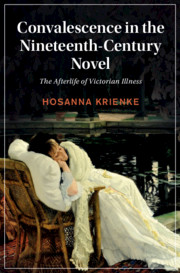Book contents
- Convalescence in the Nineteenth-Century Novel
- Cambridge Studies in Nineteenth-Century Literature and Culture
- Convalescence in the Nineteenth-Century Novel
- Copyright page
- Dedication
- Contents
- Acknowledgments
- Introduction Convalescent Time
- Chapter 1 Convalescence and the Working Class
- Chapter 2 Spiritual Convalescence
- Chapter 3 Novel Reading as Convalescence
- Chapter 4 Convalescence and Mental Illness
- Chapter 5 Imperial Convalescence
- Conclusion Convalescent Futures
- Notes
- Bibliography
- Index
- Cambridge Studies in Nineteenth-Century Literature and Culture
Chapter 4 - Convalescence and Mental Illness
Recuperability in Insane Asylums, the After-Care Association, and Samuel Butler’s Erewhon
Published online by Cambridge University Press: 24 May 2021
- Convalescence in the Nineteenth-Century Novel
- Cambridge Studies in Nineteenth-Century Literature and Culture
- Convalescence in the Nineteenth-Century Novel
- Copyright page
- Dedication
- Contents
- Acknowledgments
- Introduction Convalescent Time
- Chapter 1 Convalescence and the Working Class
- Chapter 2 Spiritual Convalescence
- Chapter 3 Novel Reading as Convalescence
- Chapter 4 Convalescence and Mental Illness
- Chapter 5 Imperial Convalescence
- Conclusion Convalescent Futures
- Notes
- Bibliography
- Index
- Cambridge Studies in Nineteenth-Century Literature and Culture
Summary
In 1871, Reverend Henry Hawkins proposed a charity that would offer post-acute rehabilitative care to patients discharged from insane asylums or, as he named them, “mental convalescents.”. Eight years later, Hawkins convened the first meeting of this long-planned charity, named The After-Care Association for Poor and Friendless Female Convalescents on Leaving Asylums. In the first meeting of the ACA, Hawkins portrayed convalescent care for mental illness as a logical extension of the work of physical convalescent homes, which had achieved nation-wide prominence by the 1870s. He reasoned, “If the cure effected in ordinary hospitals is often more permanent if a discharged patient has the benefit of a few weeks’ sojourn in the country, or by the sea-side, before resuming life’s duties, would not this advantage accrue (even à fortiori) in the case of mental convalescents?” In spite of Hawkins’s assertion of the emphatic logic of this reasoning, in the following decades, the After-Care Association faced many obstacles in its efforts to offer interpersonal care and pragmatic helps to discharged asylum patients. While convalescent homes continued to attract much public support in their efforts to rehabilitate physical illnesses throughout the final decades of the century, the ACA struggled to attract donors in the face of an emerging cultural consensus that asylum inmates were fundamentally irrecuperable.
- Type
- Chapter
- Information
- Convalescence in the Nineteenth-Century NovelThe Afterlife of Victorian Illness, pp. 97 - 121Publisher: Cambridge University PressPrint publication year: 2021

